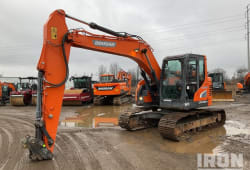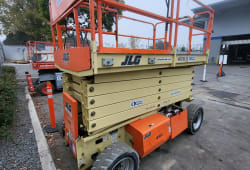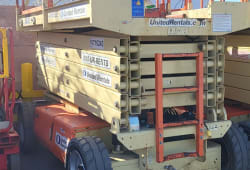Construction Industry Trends 2025: What’s Shaping the Future of Construction
4 Lectura mínima
)
mayo 4, 2025
The construction industry is undergoing a significant transformation as we move through 2025. With innovations in technology, sustainable practices, and evolving project demands, the industry is being reshaped in real time. Staying ahead of the curve isn't just beneficial-it's necessary for survival and success. In this post, we'll explore the most important construction industry trends in 2025, and how they affect the future of the construction industry from now onward.
The Future of the Construction Industry From Now 2025 and Beyond
The future of the construction industry from now through the rest of the decade is defined by smart technology integration, sustainable building practices, and data-driven project management. With global infrastructure spending projected to grow and urban populations expanding, demand for efficient and resilient structures is increasing.
Key developments include:
Wider adoption of modular construction
Increased use of digital twins and predictive analytics
Shift towards climate-resilient and net-zero buildings
These advancements are not just futuristic-they are happening now, influencing decisions on both public and private projects worldwide.
Fastest Growing Construction Industry Segments in 2025
:format(webp))
In 2025, the fastest growing construction industry segments reflect where society is headed: greener, smarter, and more connected. Notable growth areas include:
Renewable energy infrastructure: The rise in solar farms, wind energy, and battery storage facilities is fueling demand for specialized construction services.
Smart cities: Projects involving IoT integration, sustainable mobility, and connected buildings are growing rapidly.
Residential & mixed-use developments: With a focus on walkability, sustainability, and integrated amenities.
These sectors are seeing investment from both governments and private entities, making them hotspots for construction activity.
Engineering and Construction Industry Outlook
The engineering and construction industry outlook for 2025 is cautiously optimistic. Companies that adapt to new technologies and workforce trends are poised for growth, while others may struggle with ongoing supply chain disruptions and labor shortages.
Key outlook highlights:
Tech-forward companies will gain market share
Sustainability requirements will be stricter
Collaboration across disciplines will become standard
Emphasis is shifting toward agility and digital transformation, making 2025 a critical year for long-term positioning.
New Trends in Construction Materials
Innovative building materials are a major trend shaping the construction landscape. Here are a few new trends in construction materials for 2025:
Carbon-neutral concrete: Designed to reduce the industry's massive carbon footprint
Self-healing concrete: Uses bacteria or polymers to repair cracks automatically
3D printed components: Speed up timelines and reduce waste
Hempcrete & recycled materials: Eco-friendly alternatives gaining mainstream acceptance
These materials not only improve sustainability but also offer performance benefits that reduce long-term maintenance costs.
Technology Shaping the Construction Industry in 2025
:format(webp))
Tech is at the heart of construction industry trends 2025. From planning to execution, the integration of smart solutions is making construction more efficient and precise:
BIM (Building Information Modeling): Now includes real-time collaboration and lifecycle analysis
AI & machine learning: Improve decision-making and predict project outcomes
Drones & robotics: Revolutionizing surveying, site inspection, and labor efficiency
Autonomous equipment: Minimizing human error and boosting productivity
Digital tools are streamlining communication, reducing risk, and keeping projects on schedule and budget.
Sustainability and Green Construction Standards
Sustainability is no longer optional; it's a requirement. As regulations tighten and public demand grows, green construction practices are becoming standard.
Leading trends include:
Net-zero energy buildings
Water-efficient systems and materials
LEED and WELL certifications
Carbon accounting and ESG reporting
Builders are expected to not only meet sustainability benchmarks but to prove it with transparent data and third-party verification.
Conclusion
The construction industry trends of 2025 point to a future that is smarter, greener, and more efficient. With the rapid pace of change, staying informed is the key to remaining competitive. Whether it's through adopting new trends in construction materials, leveraging technology, or understanding the engineering and construction industry outlook, contractors and developers must evolve to meet the demands of a modern world.
Are you ready to build the future?














